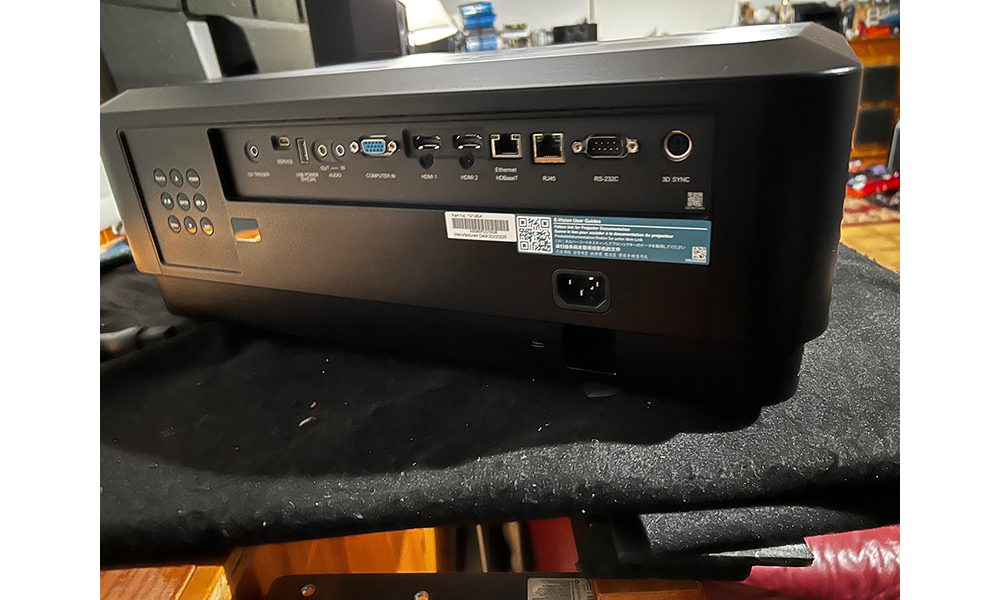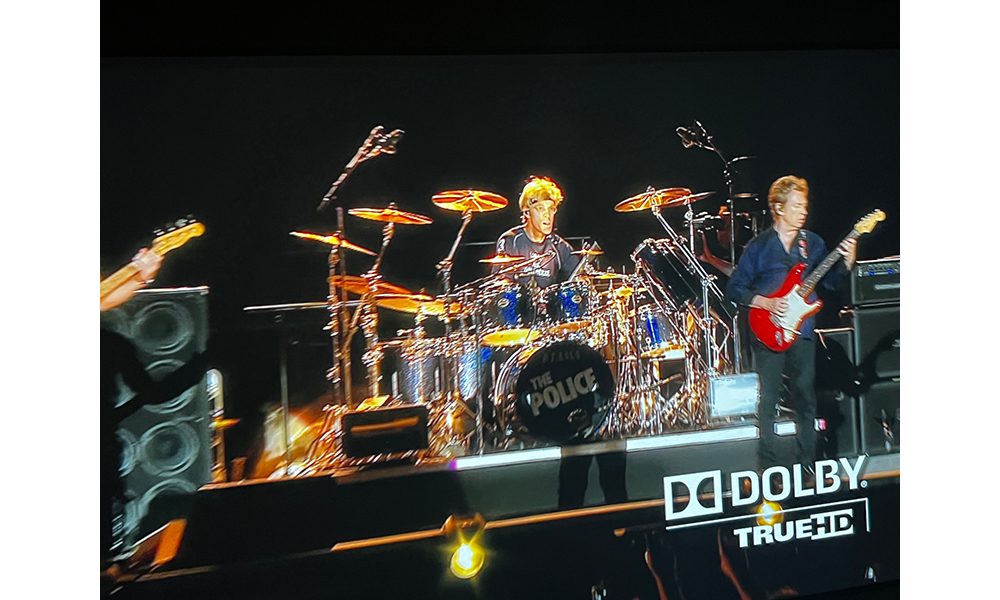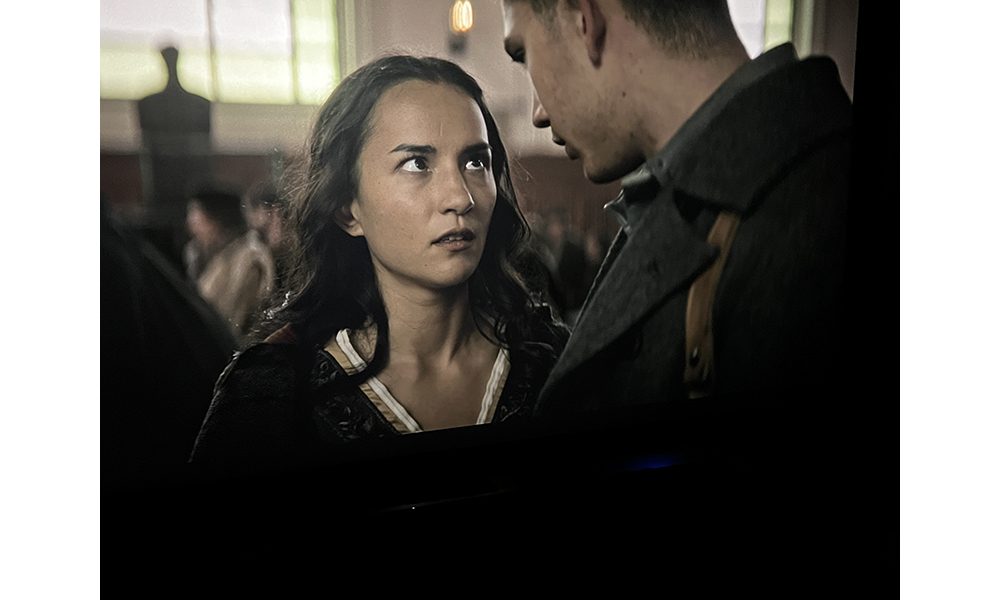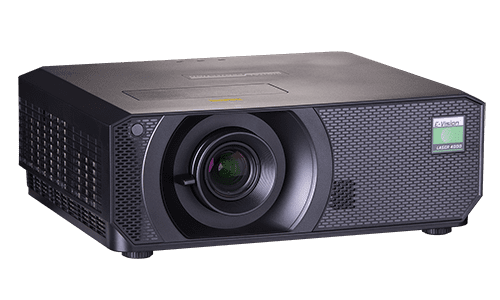About 15 years ago—give or take—Digital Projection burst onto the residential custom electronics scene and quickly won integrators over with its high-performance line of projectors. Today the company makes a range of products to serve not only the luxury side of the market, which is what the company initially targeted when it entered the market, but through its new mid-level priced E-Vision 4000, the company now reaches a much broader consumer audience.
The $5,300 E-Vision 4000 provides integrators with a competitively priced projector that comes from a company with professional video roots. Designed to support a range of home video installations that includes dedicated theater and multipurpose rooms, the reasonably priced projector offers a lot of system flexibility for both integrators and homeowners.
Earlier this year I was first exposed to the projector at Digital Sales Group Metro’s grand showroom reopening this past February (2023) in Plainview, N.Y. Intrigued by the unit, I reached out to the company to request a review sample.
Digital Projection E-Vision 4000 Features and Setup
Shipping in a single box, the single-chip UHD 4K projector is approximately the same size as other products in its price class and in the same weight neighborhood too.
After removing my projector and lifting the Digital Projection unit from its box I placed the E-Vision 4000 on my “projector shelf,” which is roughly 12 feet from my screen. I then plugged a FIBBR fiber-optic cable that’s running from my Integra DRX-3.4 AVR into HDMI input 1 and plugged the power cable in.

Some of the ways that Digital Projection streamlines the cost of the 4000 unit is through features like the product’s manual zoom and focus, as well as its horizontal and vertical lens shift options.
Looking at the foundation of the projector, the Digital Projection product utilizes a single 0.47-inch Texas Instruments DarkChip 3 DMP chip, and a laser phosphor light engine that help the projector produce a UHD 4K compliant resolution and brightness levels up to 3,300 ANSI lumens of brightness/3,800 ISO lumens.
The E-Vision 4000 also offers a pair of HDMI inputs, HDR processing, 3D support, vertical keystone correction, selectable aspect ratio modes, and HDBaseT connection options.
Setting up the projector took no time.
As I noted earlier, unboxing and making the connections were easy. Once I turned the projector on, I also found that setting the screen size, geometry and focus was also easy. The focus and zoom controls are located on rings on the projector lens. The horizontal and vertical shift controls are located on the top of the projector underneath an integrated hidden compartment. I like the feel of manual lens controls when compared to many of the powered lenses on the market. The movements seem more precise, but with that said I do understand that powered lenses are more convenient in situations such as ceiling-mounted projectors.
Not to get off-track, I then proceeded to enter the projector’s menu system, which I thought was easy to navigate. In the menu I made my various adjustments, including picture mode, black levels and contrast levels, and aspect ratio.
CE Pro Features
- Up to 3,300 ANSI lumens of brightness/3,800 ISO lumens
- Contrast ratios up to 500,000:1 (Advanced Black technology)
- Laser phosphor light engine with a rated life expectancy up to 20,000 hours
- One 0.47-inch Texas Instruments DarkChip 3 DMP chip
- UHD resolution of 3840 x 2160
- Two HDMI inputs and built-in support for HDBaseT signal transmission
- MSRP is $5,300
Performance and Final Thoughts
I will add I didn’t fine tune the E-Vision 4000 because my critical evaluation was to take place with a Screen Innovations Zero Edge Pro Pure White fixed screen. Initially, I paired the projector with an ambient light rejecting (ALR) screen to get the Digital Projection review going, however.
CE Pro and Cons
Pros
- Excellent image quality that includes nice dynamics, rich colors and bright images
- The E-Vision 4000 is easy to set up.
- The image attributes, which are underscored by the projector’s brightness allow for its use in a range of room environments, including rooms with ambient light.
Cons
- A point of contention for those arguing about the value proposition may focus on the E-Vision 4000’s lack of image processing when compared to other products in its price class.
- The projector’s optics take a few minutes to warm up and initially the E-Vision 4000 image may seem soft if the projector is in a climate with the four seasons.
I’ll note that because of the “horsepower” the E-Vision 4000 delivers through its ability to light up a screen, I think it pairs better with more traditional screen products, which brings me to the SI Zero Edge Pro screen (review to come).
SI’s stylish Zero Edge Pro screen with the company’s Pure White 1.3-gain screen material go together like peanut butter and jelly or peanut butter and Fluff (Fluffernutter) if you’re from greater Boston. With this combination I watched plenty of broadcast, including sports, as well as tons of streaming media and physical media that includes Blu-rays and UHD Blu-ray discs.
The Pure White 1.3-gain screen from SI helped to flesh out overall image brightness, as well as color brightness and peak white levels. The screen also helped to highlight the DP unit’s image depth and dynamics and low-level black detail. Watching content such as Boston Bruins NHL games, the uniforms through the E-Vision 4000 offer inky blacks, vivid whites and bold gold-trim accents. One thing that I like about the images is that yes, they are bold and vivid, but the images look natural. The whites are bright, but they are not overblown, the colors have punch, but they don’t look artificial, and the Digital Projection product is producing these attributes without sacrificing detail. I can see the mesh material in the Bruins’ uniforms and the tape wraps on their sticks.

Since I’m focusing on hockey here, I’ll also note that I have not noticed any image issues due to processing. As I noted earlier, the E-Vision 4000 is a streamlined model that omits features like motorized lenses and image processing. I do see image judder from time-to-time that processing may take care of, but I doubt that general consumers will notice nerdy elements like that.
The only thing that I will point out is the projector does require some warmup. When the unit is first turned on it fires up quickly, but images may appear soft or a little blurry for a few minutes until the optics warm up.
As a modern home theater and general use, multipurpose home projection product, I don’t think the E-Vision 4000 can be beat. If I were to make a comparison to another product, I would say it’s like the Lexus IS series of cars in the luxury automobile market. The IS series like the DP E-Vision projector doesn’t dazzle with flash such as the latest technologies, but the projector delivers outstanding performance, value, and reliability that in the case of Lexus, its German competition can’t claim. It’s my assertion the E-Vision 4000 rises to the top of its class just like the IS series for Lexus to meet requirements of consumers that want a product that offers a lot of bang for the buck.
I cannot recommend the attractively priced Digital Projection E-Vision 4000 projector enough to integrators that want to satisfy their clients’ desire for a high-end, luxury home video solution without the high-end price tag.

More news from Digital Projection: Digital Projection Cuts E-Vision Prices







